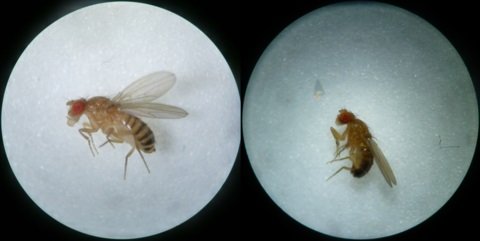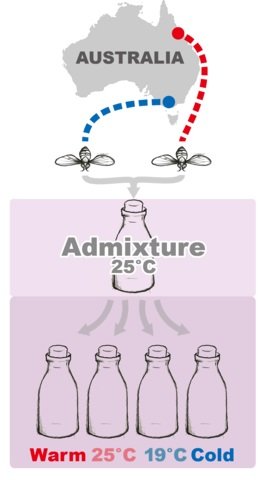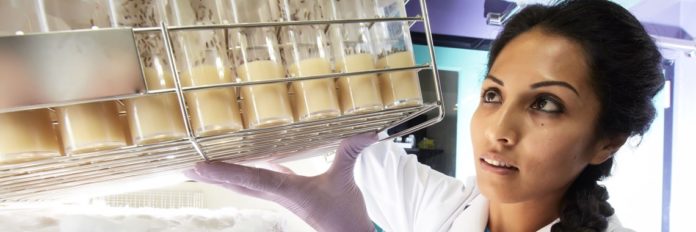Mitochondrial DNA (mtDNA) is usually passed down from one generation to the next only through the mother. Researchers have long assumed that variations in the nucleotide sequence of the small mtDNA neither affects cell functioning nor undergoes natural selection.
In any case, there is developing confirmation that some mtDNA variations can get chosen over the others in specific situations. Another investigation by specialists at Okinawa Institute of Science and Technology Graduate University (OIST), as a team with Monash University in Australia and University College London in the UK, has discovered that mtDNA can be much more subjected to choice than as of now accepted.
In an experiment with fruit flies, scientists discovered how differences in environmental temperature can influence the selection of one mtDNA variant over another.

Credit:
Dr. Zdenek Lajbner
Dr. Zdenek Lajbner, lead author said, Our design is the first of its kind when it comes to inferring the role of thermal selection in shaping mtDNA frequencies in nature.”
Scientists mainly considered two normally occurring mtDNA variations that are conveyed by fruit flies occupying the east shore of Australia. One of these variations is more typical in the sub-tropical, northern piece of the nation, where temperatures run warm, and the other is more typical in the calm, southern part, which has a tendency to be colder.
Scientists collected flies from the two destinations and afterward interbred them to get a progression of populaces with similarly blended qualities. They at that point isolated each blended populace into four subpopulations. Every one of the four subpopulations was kept up at various temperatures.
The temperature in two of the subpopulations was kept at constants of 19ºC and 25ºC separately. The temperature in the other two subpopulations changed to reenact the warm states of the two destinations from where the flies were gathered. Following three months, the scientists sequenced the mtDNA of natural product flies from every one of these subpopulations.
The team also examined how the presence of bacteria such as Wolbachia, which commonly infect fruit flies, affects mtDNA selection. To distinguish their effect, the team treated some of the fly populations with antibiotics to kill off any Wolbachia infections that they might be harboring.
Scientists discovered that in flies raised under warm research center conditions, one of the two mtDNA variations turned out to be more typical than the other. The same mtDNA variation was additionally observed to be generally common in flies from the hotter northern parts of Australia.

Credit:
Dr. Zdenek Lajbner
A comparable example was seen with the other mtDNA variation in flies raised under chilly research facility conditions. In any case, specialists just watched this impact in populaces where Wolbachia diseases had been wiped out. In addition, the various designs they saw in guys didn’t generally coordinate with the ones in females.
Dr. Lajbner said, “Further studies are needed to identify the parts of the mitochondrial genomes that are sensitive to environmental temperature and to understand the mechanisms behind it. He also notes that researchers using mtDNA as a genetic tool should keep in mind that it evolves in response to the thermal environment.”
The study was published in Scientific Reports.
